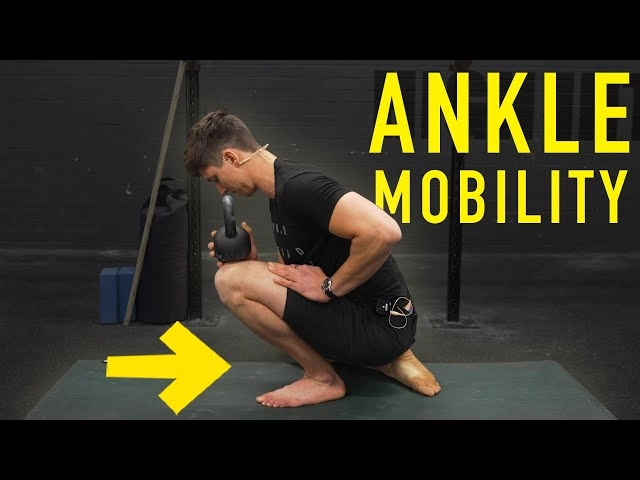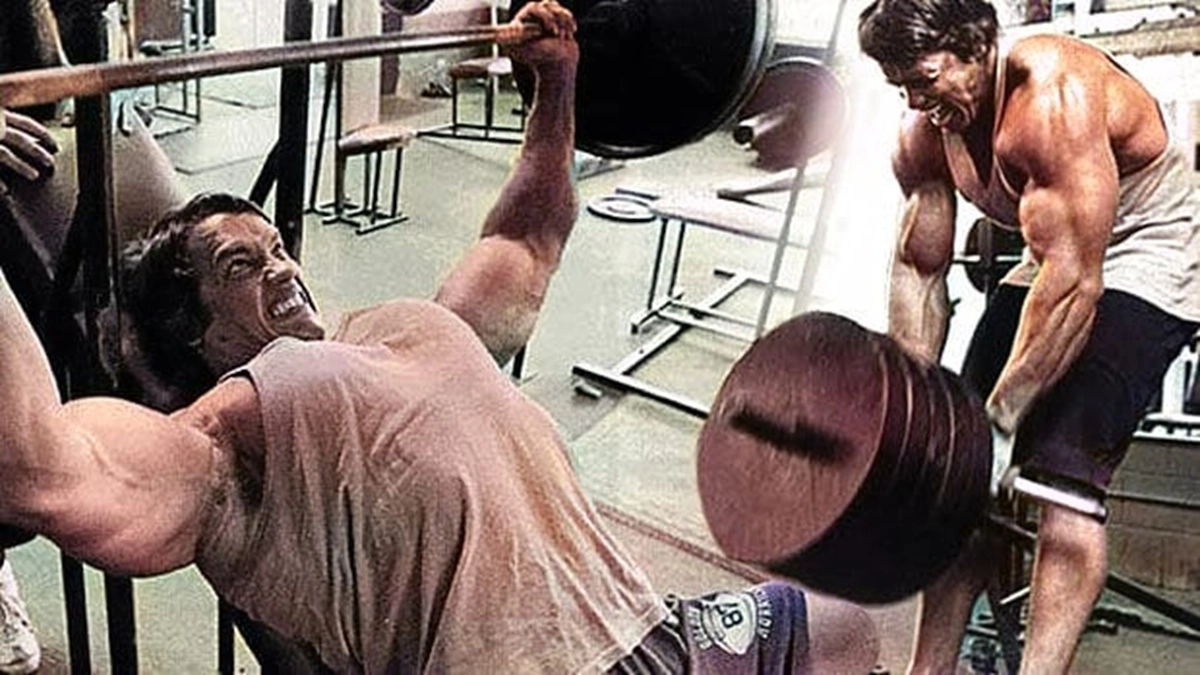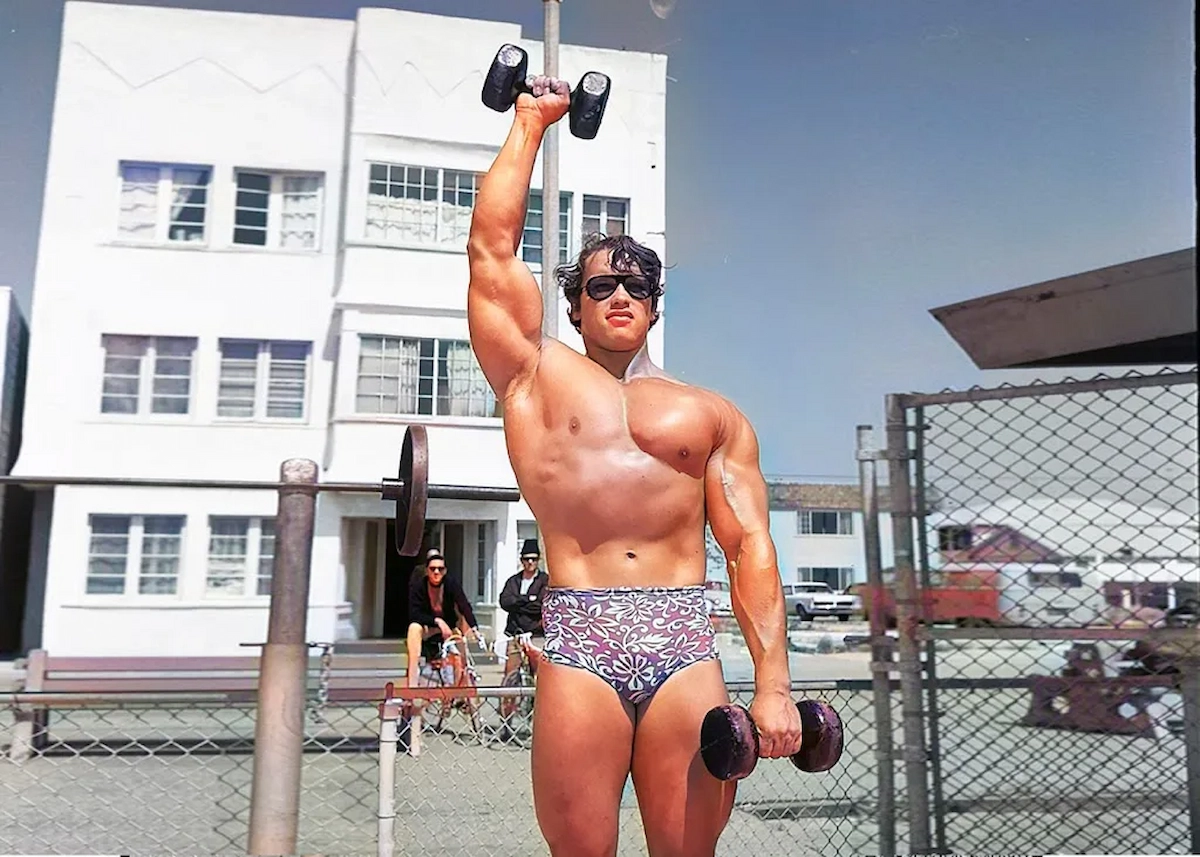You might wonder if strong, flexible ankles are truly essential for fitness success – they are, and Arnold Schwarzenegger himself emphasized their importance for his legendary squats and calf raises.
Your ankles serve as the foundation for every step, jump, and lift you’ll perform, yet they’re often neglected in training programs. Whether you’re an athlete seeking peak performance or someone who wants to move better, proper ankle mobility can be the difference between mediocre results and exceptional achievements.
What Is Ankle Mobility?
Your ankle’s mobility is a crucial element of physical performance, enabling you to move smoothly through daily activities and excel in sports. When you have good ankle flexibility, you’ll experience a greater range of motion that enhances your movement capabilities and athletic performance.
Think of ankle mobility as your foundation for movement – just like Arnold always said, “You need a strong foundation to build anything great.”
Anatomy Of The Ankle Joint
The ankle joint connects the foot to the leg. It includes bones like the tibia, fibula, and talus. Ligaments and tendons hold these bones together. Muscles surrounding the ankle play a crucial role in movement. These parts work together for balance and stability.
Flexibility allows better movement in the ankle. Stiff ankles can cause pain and injury. Flexible ankles help in running, jumping, and walking. Stretching exercises improve ankle flexibility. A flexible ankle reduces the risk of falls and enhances performance in sports.
Assessing Your Ankle Flexibility
Stand on a flat surface with your feet together. Try to lift your toes as high as possible. Repeat this test with each foot. Notice how high each toe goes. Use a ruler to measure the height.
Another test involves sitting on the floor with legs straight. Point your toes forward and then pull them back. Measure the angle of your ankle. Compare the angles of each foot.
High toe lifts mean good flexibility. Low lifts suggest tight muscles. Larger ankle angles indicate better mobility. Smaller angles show limited flexibility.
Symmetry is important. Both feet should have similar flexibility. Notice any significant differences between your feet. These differences may need special attention.

Ankle Circles
Begin your ankle mobility journey with one of the simplest yet most effective exercises: ankle circles. These fundamental ankle mobility exercises enhance your range of motion while improving ankle stability and proprioception.
To perform this ankle joint mobilization:
- Sit or lie down comfortably
- Place a rolled towel or foam roller beneath your ankle
- Rotate your foot in circular motions – 10 clockwise, then 10 counterclockwise
- Keep your leg still; movement should come only from your ankle
- Focus on smooth, controlled circles
Want to take your ankle stretches to the next level? Try spelling out the alphabet with your big toe.
This variation challenges your ankle control and adds variety to your mobility routine. Remember, consistent practice of these basic movements will steadily improve your ankle’s flexibility and function.
Single-Leg Balance
Single-leg balance represents one of three foundational exercises for developing superior ankle stability and proprioception. To perform this balance exercise, stand on a flat surface with your feet shoulder-width apart, keeping a chair or wall nearby for support.
Extend your arms outward and lift one foot off the ground. Practice this exercise daily to prevent ankle injuries and improve your ankle mobility.
Once you’ve mastered holding the position for 60 seconds, challenge yourself with advanced variations:
- Balance with eyes closed
- Keep your arms at your sides
- Stand on unstable surfaces like pillows or balance discs
As any physical therapist will tell you, you can integrate single-leg balance into daily activities, such as brushing your teeth or waiting in line.
Perform 1-2 repetitions per side.
Standing Heel Lifts
Standing heel lifts represent a fundamental ankle strengthening exercise that targets your calf muscles while improving balance and stability.
You’ll start by positioning your feet shoulder-width apart, with a chair or wall nearby for support.
To perform this mobility exercise effectively, lift your heels off the ground in a controlled calf raise, focusing on the movement of the ankle joint. Lower your heels back down slowly to maximize muscle engagement. Aim to complete 2-3 sets of 10 heel raises each.
For added challenge, you can incorporate weights during your ankle mobility routine.
What’s great about these simple yet effective exercises is their versatility – you can even practice them while doing everyday tasks, such as washing dishes, making them perfect for busy schedules.
Toe Raises and Heel Drops on a Step.
While heel lifts offer a solid foundation for ankle mobility, toe raises and heel drops on a step take your flexibility training to the next level. This exercise enhances foot and ankle mobility by increasing ankle dorsiflexion and providing a deeper calf stretch.
Position yourself on the bottom step, letting your heels hang off the edge. You’ll want to keep your weight on the balls of your feet and use the banister for balance if needed.
Perform eccentric calf raises by lifting onto your toes, then slowly lowering your heels below step level. This controlled movement is particularly effective for preventing ankle sprain injuries.
Complete 2-3 sets of 10 repetitions every other day. As you progress, you can intensify the exercise by holding weights during your toe raises. Just like Arnold says, “The last three or four reps are what makes the muscle grow.”
Ankle Flexion (Plantar)
Plantar flexion exercises strengthen one of the most vital movements in your ankle’s range of motion. This movement, which involves the talus bone, is essential for preventing ankle pain and maintaining healthy mobility through ankle circles.
To perform this exercise:
- Sit on the ground with one leg bent at the knee
- Loop a resistance band around the front of your foot
- Hold both ends firmly with your hands
- Point your toes forward and slowly return to the starting position
As part of a thorough foot and ankle conditioning program, foot and ankle specialists recommend performing three sets of 10 repetitions per foot, three times a week.
Like Arnold’s famous “pump,” this exercise builds strength through controlled resistance, ensuring your ankles can handle whatever challenges you throw at them.
Ankle Flexion (Dorsiflexion)
Dorsiflexion, the upward ankle movement that complements plantar flexion, strengthens a different but equally significant set of muscles and tendons. This exercise is crucial for enhancing ankle flexibility and maintaining proper knee stability during activities such as walking and running.
To perform this exercise:
- Sit on the floor with your legs extended
- Loop a resistance band around a sturdy chair or table leg
- Wrap the band’s other end around your foot
- Pull your toes up toward your body
- Return to the starting position with control
Perform 3 sets of 10 repetitions for each foot, three times weekly. You’ll notice improved ankle mobility and stronger calf muscles over time.
Just as Arnold always said, “The last three or four reps are what makes the muscle grow,” so maintain proper form throughout each set.
Toe-Heel Walks
As you progress through ankle flexibility training, toe-to-heel walks offer a dynamic exercise that simultaneously strengthens multiple muscle groups.
This versatile movement improves both ankle mobility and ankle strength, making it a favorite at foot and ankle specialty centers.
Here’s how to perform toe-heel walks:
- Walk approximately 30 feet while balanced on your toes
- Turn around and return the same distance on your heels
- Complete 3-5 sets
You can incorporate this exercise into your daily routine, such as while cooking or cleaning in your kitchen.
It’s an excellent complement to other mobility exercises, such as the knee-to-wall test.
The beauty of toe-heel walks lies in their simplicity – you’ll strengthen your feet and ankles, regardless of whether you’re wearing shoes or not.
Lunges (Static)
Mastering static lunges opens a powerful path to enhanced ankle stability and balance control. Start by positioning your feet forward, similar to how you’d position yourself on a slant board. Just like Arnold advocated for perfect form over ego lifting, maintaining proper alignment is essential.
Here’s how to perform static lunges effectively:
- Stand with one foot in front, similar to the stance you’d take on a wobble board
- Keep your spine straight, avoiding knee valgus
- Lower your back knee toward the ground
- Push up with control, as if practicing a seated ankle stretch
Complete 2 sets of 10 repetitions, then add variation by taking three steps between lunges.
Once you’ve mastered the basic form, you can progress to more challenging versions, much like graduating from a BAPS board to more complex balance tools.
Walking Lunge
Walking lunges elevate your ankle flexibility training to the next level, combining dynamic movement with precision control. This challenging exercise engages both your core and lower body while improving ankle mobility through controlled movement patterns.
To perform walking lunges:
- Take a confident step forward with one leg.
- Lower your back knee toward the ground while bending your front knee at 90 degrees.
- Keep your front thigh nearly parallel to the floor.
- Hold this position briefly.
- Step through with your back leg to initiate the next lunge.
If you’re new to this exercise, consider working with a trainer to perfect your form. Start with a modest goal of 5 lunges per leg, gradually building up to 10 as your strength and stability improve.
You’ll notice enhanced ankle flexibility and better overall lower body control.
Plyometrics
You’ll find plyometric exercises, such as ankle jumps, double-leg hops, and single-leg hops, especially effective for building explosive power in your ankles.
These jumping movements train your muscles to generate maximum force quickly, helping improve your athletic performance and ankle stability.
As you begin, focus on executing each jump with proper form and control before increasing the intensity or number of repetitions.
#Ankle Jumps
Ankle jumps represent a powerful plyometric exercise that develops explosive strength and flexibility in your ankles. To perform them correctly, start by standing tall with your hands placed firmly on your hips.
Execute vertical jumps without bending your knees, focusing on the movement of your ankles. As you’re airborne, dorsiflex your ankles by pulling your toes up toward your shins. Just before landing, extend your ankles back to prepare for ground contact.
When your feet touch down, immediately push through the balls of your feet to launch into your next jump. Maintain minimal ground contact time for maximum effectiveness.
Begin with 2-3 sets of a few repetitions each, gradually building up to 25 reps per set. You’ll notice improved ankle stability and power as you progress through this challenging plyometric routine.
#Double Leg Hops
Building on your ankle power development, double-leg hops offer an intermediate-level plyometric exercise that strengthens your lower body while maximizing explosive force.
Here’s how to perform double-leg hops:
- Start in a standing position with your feet shoulder-width apart and arms relaxed at your sides.
- Explosively jump straight up while simultaneously raising your arms overhead.
- Land softly on both feet, immediately returning to your starting position.
- Perform 10 repetitions with minimal rest between jumps.
As Arnold would say, “The power is in the details.” Focus on maintaining proper form throughout each jump.
Your landings should be controlled and quiet, distributing weight evenly across both feet.
This exercise enhances ankle stability, improves coordination, and builds the explosive power needed for more advanced plyometric movements.
#Single-Leg Hops
Taking your plyometric training to the next level, single-leg hops challenge your balance and coordination while isolating each ankle for targeted strength development.
Here’s how to perform them effectively:
- Stand tall with your arms relaxed at your sides.
- Balance on one leg while maintaining proper posture.
- Jump straight up, raising your arms as you ascend.
- Land softly on the same leg, maintaining control.
- Complete 10 repetitions before switching legs.
For added variety and intensity, you can progress to:
- Side-to-side single-leg hops
- Forward and backward hops
- Diagonal patterns
Remember to focus on controlled movements and stable landings.
As Arnold would say, “The mind is the limit. As long as the mind can envision it, you can do it” – this applies perfectly to mastering single-leg control.
Ankle Strengthening Benefits
By strengthening your ankles through targeted exercises, you can enhance your overall movement awareness and control during daily activities and workouts.
Strong, flexible ankles create a solid foundation that enhances leg strength from the ground up, improving your performance in everything from squats to sprints.
You’ll also find relief from high-heel discomfort as your ankles become more resilient and better able to handle varying foot positions, just like Arnold discovered when perfecting his iconic calf raises.
1. Increased Movement Awareness
When you strengthen your ankles through targeted exercises, you’ll develop a better awareness of how your feet and legs move through space—a vital capability called proprioception.
This enhanced body awareness helps prevent injuries by alerting you to potential missteps before they occur.
One of the most effective ways to improve your proprioception is through balance training.
The single-leg balance exercise with closed eyes challenges your body’s spatial awareness system and strengthens the mind-muscle connection.
Research supports this approach, with a 2015 meta-analysis confirming that proprioceptive training significantly reduces the risk of ankle sprains.
Think of proprioception as your body’s built-in GPS – the better it works, the more confidently you’ll move through your workouts and daily activities.
2. Leg Strengthening
Strong ankles provide a robust foundation for overall leg strength, making them essential for activities ranging from running to weightlifting.
When you train your ankles, you’re not just working on a single joint – you’re building strength that travels up through your calves, knees, and thighs.
Research indicates that a “ground-up” training approach, beginning with ankle strength, is crucial for runners and athletes.
It’s like Arnold always said: build a solid base before adding the details.
Your ankles serve as the connecting point between your feet and legs, influencing your walking gait and overall movement patterns.
3. High-Heel Relief
Do your ankles feel stiff and sore after a long day in heels?
Regular ankle flexibility exercises can help combat the strain that high heels put on your joints and muscles.
To relieve heel-induced tension:
- Roll your ankles in circles, 10 times clockwise and counterclockwise
- Point and flex your feet for 30 seconds each
- Perform heel-to-toe rocks while seated
- Stretch your calf muscles against a wall
Just as Arnold always said, “The last three or four reps are what makes the muscle grow,” consistency in these exercises makes the difference.
Incorporate these movements into your daily routine, especially after wearing heels. You’ll notice improved ankle mobility, reduced discomfort, and better stability when walking in your favorite pumps.
Remember to perform these exercises gently and stop if you experience any pain.
Recovery And Maintenance
Post-exercise care helps in reducing muscle soreness. It also prevents injuries and speeds up muscle recovery. Stretching the ankle after exercise helps keep the joint flexible. Applying ice can help reduce any swelling.
Massaging the ankle increases blood flow and helps in muscle relaxation. Proper hydration is crucial for replenishing lost fluids. Wearing supportive shoes can also aid in ankle recovery.
Consistent stretching maintains ankle flexibility. Regular strength training helps in building ankle stability. Balance exercises prevent future injuries. Using ankle braces during high-impact activities provides extra support.

Keeping a healthy weight reduces stress on the ankles. Proper footwear is crucial for long-term ankle health. Incorporate these strategies into daily routines for best results.
To Wrap It All Up
Like a strong foundation supports a towering building, your ankles are the pillars of your movement. You’ve now got the tools to build ankle mobility that’ll serve you well in both daily life and athletic pursuits.
By incorporating these exercises into your routine, you’re not just strengthening joints – you’re creating a solid base for your fitness journey, much like Arnold’s dedication to building from the ground up.
FAQs
Why Is Ankle Flexibility Important?
Ankle flexibility is important because it improves mobility, enhances balance, and prevents injuries. Flexible ankles allow deeper squats, smoother gait, and better force absorption during movement. Limited range of motion in the ankles can lead to poor posture and compensatory stress on joints.
What Causes Stiff Ankles?
Stiff ankles are caused by limited joint mobility, tight calf muscles, previous injuries, or inflammation. Scar tissue and poor circulation also contribute to reduced range of motion. Regular stretching and physical therapy can address stiffness and restore ankle flexibility.
How Does Ankle Flexibility Affect Balance and Posture?
Ankle flexibility affects balance and posture by allowing proper foot alignment, joint stability, and weight distribution. Limited flexibility disrupts movement patterns, leading to instability and poor posture. Improved ankle mobility supports upright stance and dynamic control during walking or exercise.
Ankle Flexibility vs Ankle Strength: What’s the Difference?
The main difference between ankle flexibility and ankle strength is that flexibility allows range of motion, while strength provides stability and power. Flexibility supports movement efficiency, and strength protects against sprains and enhances force generation. Both are essential for joint health and performance.
Can Poor Ankle Mobility Cause Knee or Hip Pain?
Poor ankle mobility can cause knee or hip pain by altering movement mechanics and forcing the body to compensate. Limited dorsiflexion shifts strain upward, affecting gait and joint alignment. Over time, this compensation increases stress on the knees and hips, leading to discomfort or injury.
Are Tight Calves Linked to Poor Ankle Flexibility?
Tight calves are linked to poor ankle flexibility because they restrict dorsiflexion, limiting the ankle’s range of motion. Shortened calf muscles reduce joint mobility and contribute to movement dysfunction. Stretching the calves regularly helps improve flexibility and restore ankle function.
Can Ankle Stretches Prevent Injuries?
Ankle stretches can prevent injuries by improving flexibility, increasing joint range, and enhancing stability. Regular stretching reduces stiffness, promotes better movement patterns, and lowers the risk of sprains and strains during physical activity. Flexible ankles absorb force more effectively and protect surrounding joints.











